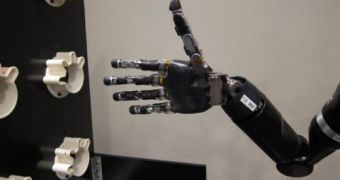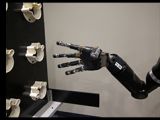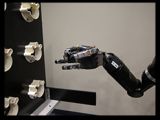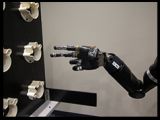Prosthetics are the key to restoring the full range of motion to amputees and paraplegics, so we're always keeping an eye out for them. The most recent achievement in this field comes from the University of Pittsburgh.
There are many people who are forced to rely on artificial replacements for actual limbs, none of which measure up to the real thing.
However, some prosthetics are inherently better than others, and recently there have been honest-to-heavens mind-controlled ones too.
One paralyzed woman called Jan Scheuermann, who already controlled a robotic arm using just her thoughts, was granted a greater range of motion not long ago.
She suffers from quadriplegia and agreed to help study and develop mind-controlled prosthetics two years ago. We can definitely say that she is seeing benefits thanks to her agreement.
The prosthetic arm can move in 10 dimensions
The 55-year-old woman is a Pittsburgh, PA citizen who was rendered paralyzed from the neck down in 2003, due to a neurodegenerative condition.
She was found eligible for a research study in 2012, by scientists from the University of Pittsburgh, and has undergone surgery that fit her with two electrode grids, each featuring 96 tiny contact points in the regions of her brain responsible for arm and hand movements.
In a nutshell, they wired a computer straight into Jan Scheuermann’s brain, since the spine marrow and all other nerves in her body are useless now.
A prosthetic arm wasn't immediately connected because the scientists had to keep the brain connected to a computer, in order to pick up pulses of electricity fired between the neurons. Only after could they develop a brain-machine interface (BMI) that would successfully run an electromechanical arm.
The mind-controlled prosthetic arm
It may not look all that glamorous, but it does do what it was meant to do. Until not long ago, it could only move in seven dimensions (7D), allowing for high fives and thumbs-up. But now there are ten dimensions, as four more hand movements have been added.
The woman can now make scoops, extend her thumb, pinch things and fully spread her fingers (called finger abduction), instead of the hand being stuck in grip mode permanently.
And yes, Jan really doesn't have to do anything but think of how to move her arm. Pretty great for an experiment that has only been going on for two years.
And with artificial skin that detects touch (including direction) and has the ability to stretch, we're well on the way to fully functional limb replacements.

 14 DAY TRIAL //
14 DAY TRIAL // 


